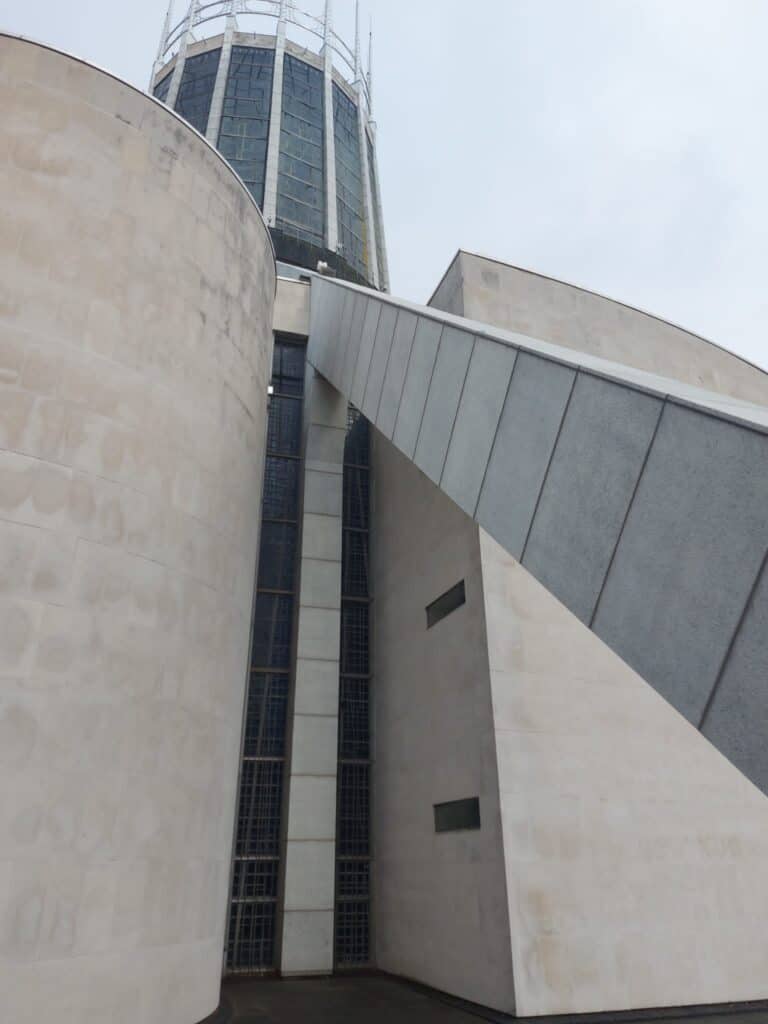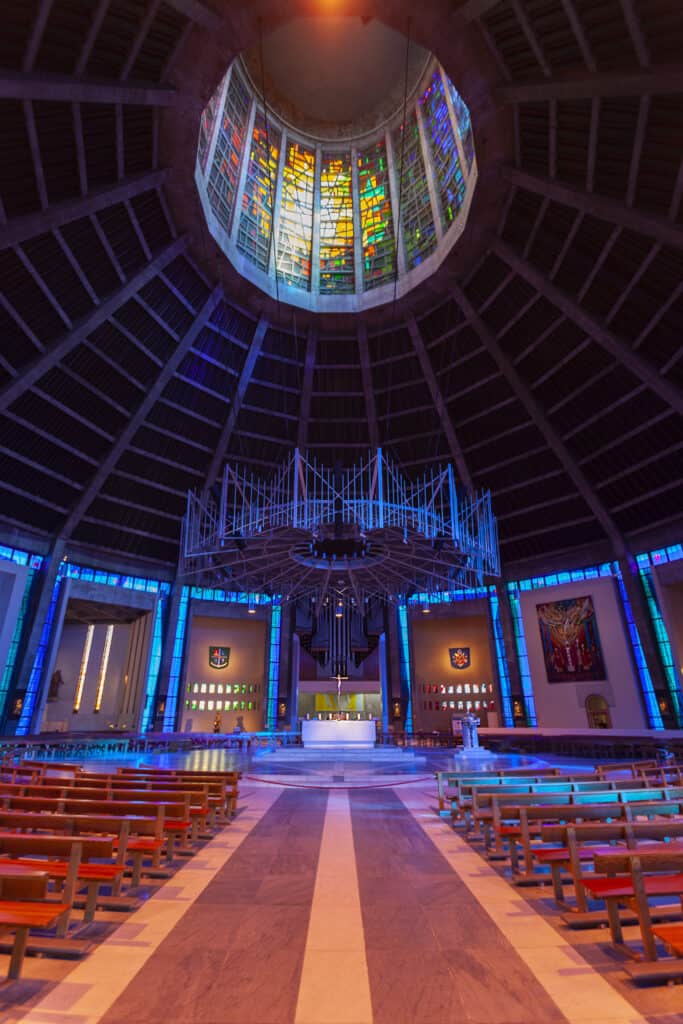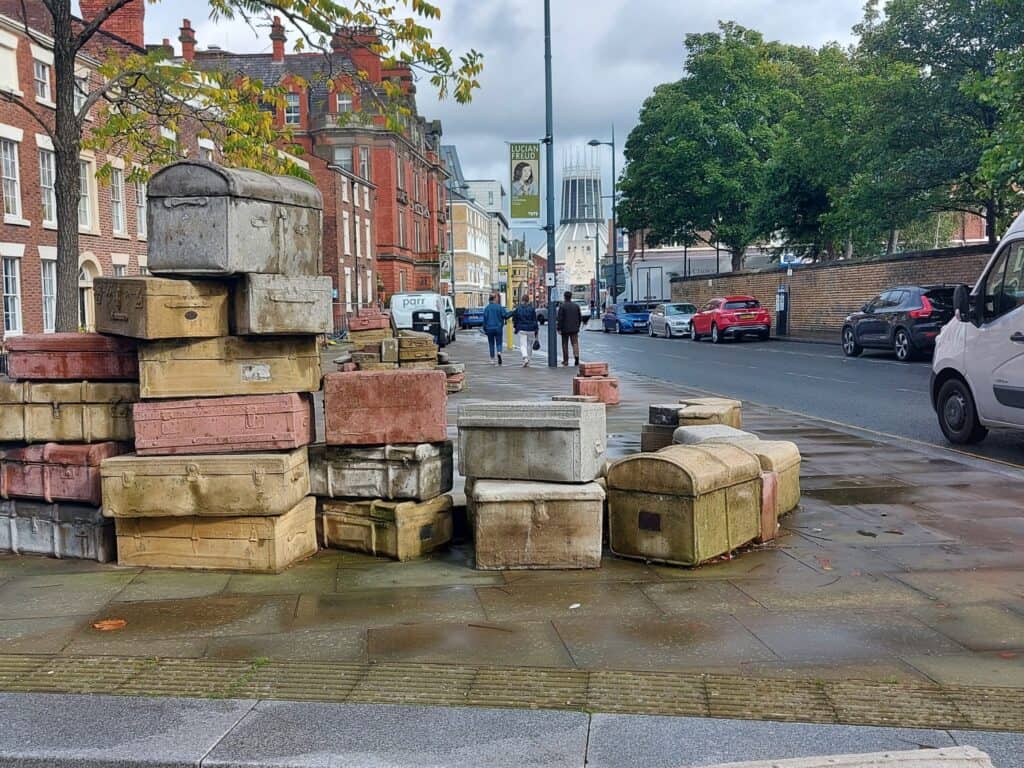
A CASE STUDY OF LIVERPOOL’S CATHOLIC CATHEDRAL
There’s much that could be said about the news received this summer that Liverpool’s Docks had lost its status as a World Heritage Site.
In our role as planning consultants we often experience firsthand the tension that can arise when seeking to deliver economic, social, and environmental sustainability. The loss of WHS status for Liverpool demonstrates how easy it is to reach different conclusions on the acceptable level of change to a heritage asset.
But, with all this negative press it might be easy to forget just what a historic gem Liverpool really is. Does it surprise you to hear that Liverpool is home to the most listed buildings in England outside of London?
Over the years of working in Liverpool, its historic credentials have made quite the impression on us. And with such a lot of listed buildings crammed into the city, it’s odds on that a development proposal in the city will impact upon one.
When you submit a planning application that potentially impacts upon a heritage asset, you must be able to describe its significance. Then, and only then, can you properly understand what impact your proposal might have on it.
That’s why it’s so important to assess for significance using a clear, staged approach.
Sounds confusing?
Read on, as we walk you through the process of identifying and assessing an asset’s significance, using the city’s astonishing Catholic cathedral as a case study.
We will cover how to assess impact in a future piece.
WHAT IS A HERITAGE ASSET?
A heritage asset is not simply a listed building.
The term encompasses other designated heritage assets (like conservation areas and World Heritage Sites) and non-designated assets (buildings that hold local significance, even if not on the National Heritage List for England).
You can see that the net falls much wider than listed buildings. And in a place like Liverpool, that’s a lot of heritage assets.
WHAT IS SIGNIFICANCE?
Significance is a collective term for the varied values that can be attached to a place.
If you think about it, a place or building will hold special value for any number of reasons. Perhaps it looks unusual or beautiful, perhaps something important happened there in the past. Or maybe it retains original material which reveals something particular about the past.
To deal with such variety and scope, significance can be categorised in the following ways:
ARCHAEOLOGICAL INTEREST
An asset may hold evidence of past human activity.
ARCHITECTURAL AND ARTISTIC INTEREST
A building’s design or the general aesthetics of a place may hold value.
HISTORIC INTEREST
Finally, it may be associated with past lives and events. It’s not just about how something looks. It might help us understand the past or provide meaning for communities connected to faith or cultural identity.

WHY MUST YOU ASSESS SIGNIFICANCE?
National planning policy requires all applicants to describe the significance of any heritage assets affected by a development proposal (designated or not). It’s only then that you can really assess whether your proposal might have an impact.
For one asset, a clear view of a landmark building might contribute to its historic significance, in which large scale development in an important view could be harmful even though no physical intervention would take place.
In the case of a planned worker village, the streetscape and uniformed nature of the buildings might be key, so physical internal changes would not cause significant harm.
Until you can appreciate an asset’s significance, you can’t take the next step to assessing impact.
HOW MUST YOU ASSESS SIGNIFICANCE?
Step One: Identify which heritage assets may be affected
When you’re beginning your journey, take a step back and identify what may be affected by the proposal. Remember, this goes beyond listed buildings, and also includes the setting of a heritage asset.
This is when to undertake a site visit and consult historic records and other key sources of evidence.
OUR CASE STUDY: LIVERPOOL METROPOLITAN CATHEDRAL
Let’s say our proposal has the potential to impact on the setting of the cathedral. So, next step, we need to understand what makes the cathedral special.
Step Two: Understand the asset
Dig deep to understand the asset and what its history reveals. This helps to identify why it is special.
For example, is it a building, an open space, or a conservation area? Is it a collection of buildings that were planned intentionally or a single noteworthy building? Is it connected with someone famous or a key point in history?

OUR CASE STUDY: LIVERPOOL METROPOLITAN CATHEDRAL
The cathedral is Grade II* listed putting it in the top 6% of all 400,000 listed buildings in England. So, we already know it’s a particularly important building.
It was built in the 1960s and listed in 1994 but, though modern in nature, it hides a long history. It’s actually the fourth attempt to build a mother church for the Catholic diocese and has various connections to some well-renowned architects (Pugin, Lutyens and Gibberd).
The building stands out for many reasons. It has a circular footprint and a central altar positioned beneath a tower and lantern that, when viewed from outside, crowns the building. The use of modern stained glass sets it apart from other more historic religious buildings because of its vibrant colours. It is truly an iconic building.
But, it is also more than a building. It’s a place of worship, the centre of a community and, for many, it represents a means of connecting with their faith.

Step three: Understand the significance of the asset
Armed with knowledge about the asset itself, you can now think about what significance it holds, using Historic England’s advice as a guide.
OUR CASE STUDY: LIVERPOOL METROPOLITAN CATHEDRAL
The cathedral holds architectural significance in abundance because of its avant-garde design, making it unlike any other cathedral in the country. The use of a circular plan and central altar, the choice to represent a crown of thorns at its tower and its dazzling stained glass all add to its architectural significance.
It also holds historic significance because it was built, in part, in response to the influx of Irish migrant workers who were lacking a place to feel at home and to congregate. Its communal value is further cemented by it being a focus for worship and home to a community of faith.
Connections to renowned architects only further cement its architectural and historic significance.
WHAT NEXT?
So, the first part of the process is done: identifying what makes it special.
This work should take place early in the process so that it can inform the evolution of development proposals and make sure that your scheme minimises harm, or better still looks for ways to better reveal or enhance significance.
The next step is to assess the effects of the proposed development and how that impacts upon significance.
Feel like a lot to take on board?
This is where we come in.
At P4, we are experts at dealing with heritage assets and assessing their significance. We’ll guide you through the planning system to create a sensitive scheme that respects the asset whilst still delivering on your ambitions.
Get in touch and let us help you.